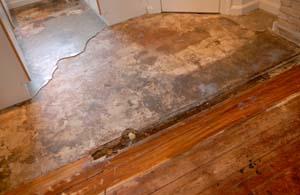6 Water Damage Restoration Do's as well as Don'ts.
6 Water Damage Restoration Do's as well as Don'ts.
Blog Article
We've unearthed this article pertaining to 5 Home Safety Tips To Reduce The Risk Of Fire And Water Damage listed below on the net and think it made perfect sense to relate it with you over here.

Water provides life, water intrusion on parts where it's not supposed to be can result in damages. It can peel away surfaces and deteriorate the structure if the water soaks into your framework. Mold and mildew and mildew additionally grow in a moist environment, which can be hazardous for your health. Residences with water damage smell mildewy as well as old.
Water can originate from several resources such as typhoons, floods, burst pipelines, leakages, and also sewage system problems. In case you experience water damages, it would certainly be good to recognize some security precautions. Right here are a few standards on exactly how to deal with water damages.
Do Prioritize Home Insurance Policy Protection
Water damage from flooding dues to hefty winds is seasonal. You can likewise experience an abrupt flood when a damaged pipe unexpectedly bursts right into your residence. It would be best to have house insurance policy that covers both acts of God such as all-natural calamities, as well as emergency situations like broken plumbing.
Don't Neglect to Turn Off Utilities
In case of a disaster, particularly if you stay in a flood-prone area, it would be a good idea to switch off the main electrical circuit. This removes power to your entire house, avoiding electric shocks when water can be found in as it is a conductor. Do not neglect to transform off the major water line valve. Furnishings will certainly relocate about and cause damages when floodwaters are high. Having the major shutoff shut off prevents further damage.
Do Stay Proactive and Heed Weather Alerts
Listen to discharge cautions if you live near a lake, creek, or river . Doing so lowers prospective residential or commercial property damage.
Don't Disregard the Roofing System
You can stay clear of rainfall damages if there are no holes as well as leakages in your roofing system. This will certainly prevent water from moving down your wall surfaces and soaking your ceiling.
Do Take Notice Of Small Leaks
A burst pipe does not take place over night. Typically, there are warnings that show you have actually weakened pipes in your home. For example, you might discover bubbling paint, peeling off wallpaper, water touches, water discolorations, or dripping audios behind the wall surfaces. Ultimately, this pipe will certainly rupture. Preferably, you must not await points to escalate. Have your plumbing fixed prior to it causes massive damage.
Don't Panic in Case of a Burst Pipe
Maintaining your presence of mind is crucial in a time of dilemma. Panicking will only intensify the trouble due to the fact that it will certainly suppress you from acting fast. Timing is crucial when it comes to water damage. The longer you wait, the more damages you can expect. Thus, if a pipeline bursts in your residence, quickly turned off your primary water shutoff to remove the source. After that unplug all electrical outlets in the location or turn off the breaker for that part of your home. Call a trustworthy water damage restoration expert for assistance.
Water provides life, water breach on parts where it's not meant to be can result in damages. Homes with water damages scent old and mildewy.
Water damages from flooding dues to heavy winds is seasonal. You might notice bubbling paint, peeling off wallpaper, water touches, water stains, or leaking noises behind the wall surfaces. When it comes to water damage, timing is crucial.
Some Do's & Don't When Dealing with a Water Damage
DO:
Make sure the water source has been eliminated. Contact a plumber if needed. Turn off circuit breakers supplying electricity to wet areas and unplug any electronics that are on wet carpet or surfaces Remove small furniture items Remove as much excess water as possible by mopping or blotting; Use WHITE towels to blot wet carpeting Wipe water from wooden furniture after removing anything on it Remove and prop up wet upholstery cushions for even drying (check for any bleeding) Pin up curtains or furniture skirts if needed Place aluminum foil, saucers or wood blocks between furniture legs and wet carpet Turn on air conditioning for maximum drying in winter and open windows in the summer Open any drawers and cabinets affected for complete drying but do not force them open Remove any valuable art objects or paintings to a safe, dry place Open any suitcases or luggage that may have been affected to dry, preferably in sunlight Hang any fur or leather goods to dry at room temperature Punch small holes in sagging ceilings to relieve trapped water (don't forget to place pans beneath!); however, if the ceiling is sagging extremely low, stay out of the room and we'll take care of it DO NOT:
Leave wet fabrics in place; dry them as soon as possible Leave books, magazines or any other colored items on wet carpets or floor Use your household vacuum to remove water Use TV's or other electronics/appliances while standing on wet carpets or floors; especially not on wet concrete floors Turn on ceiling fixtures if the ceiling is wet Turn your heat up, unless instructed otherwise

I am very fascinated by What You Can Do At Home To Prevent Fire And Water Damage and I am assuming you appreciated our article. Do you know somebody else who is enthusiastic about the niche? Be sure share it. I recognize the value of reading our article about 5 Home Safety Tips To Reduce The Risk Of Fire And Water Damage.
Report this page